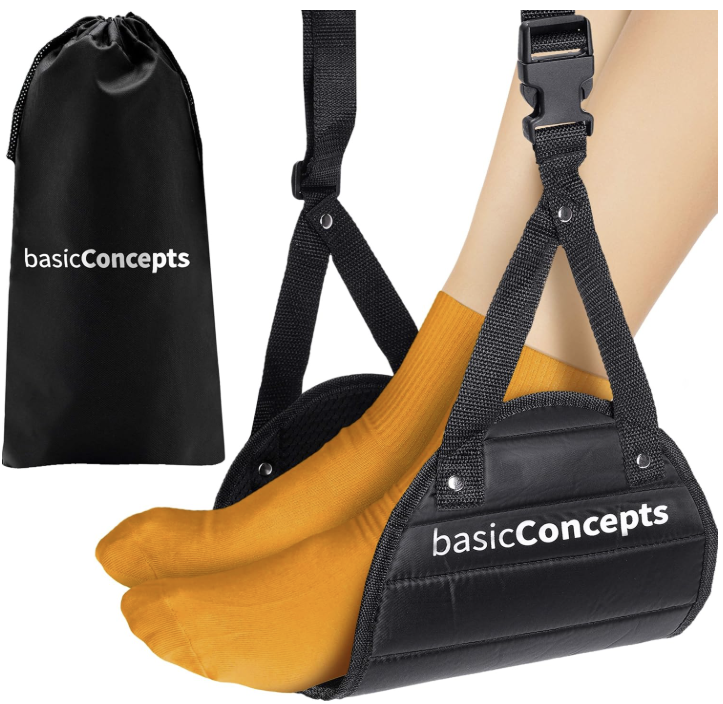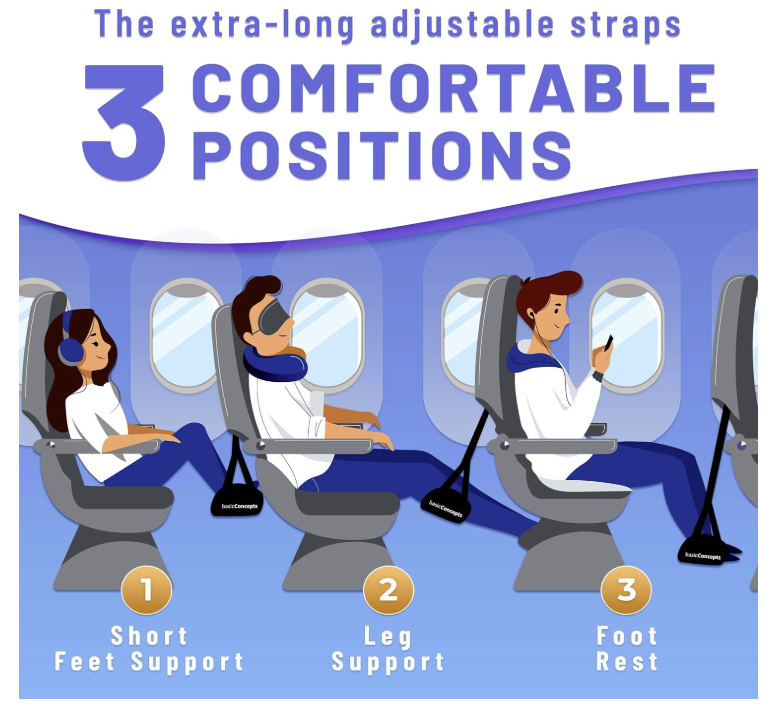You’ve heard that you should take measures to prevent dvt in flight. You’re smart to think about preventing deep vein thrombosis or DVT in your legs during a long flight and dangers of a clot traveling and becoming a pulmonary embolism. Do you have an upcoming flight that is longer, and is there anything you can do to minimize your chances of getting a potentially life-threatening blot clot? Reduce your fears and chances of DVT with the following advice.
What is Deep Vein Thrombosis
DVT can be a life-threatening blood clot that develops in a leg vein and then travels through the bloodstream to the lungs, causing a pulmonary embolism. A pulmonary embolism can block blood flow and be fatal. In general, the longer the flight, the greater the risk, with flights lasting more than 8 hours posing the most risk.
Signs of potential DVT include:
swelling of the ankles and/or legs
extreme pain and usually only in one leg
worsening pain
the skin over the clot may feel warmer to the touch
the skin may turn a reddish or bluish color
Your symptoms will chiefly depend on the size of the clot in your leg. The symptoms may barely be noticeable if you only have a small clot or even not at all. If the clot is large, you could experience extreme pain and leg swelling symptoms, or you might only have minor calf swelling without a lot of pain. If the clot is large, your entire leg could become swollen with extensive pain.
Some travelers will already be more predisposed to developing DVT. The risk factors include:
- being over 50
- being overweight
- smoking
- having varicose veins in your legs
- undergoing hormone therapy
- having a family history of DVT
Preventing DVT on a Plane
The good news is you have a few things you can do to ward off a DVT event when traveling. The idea is to keep your blood circulating. Particularly the blood that can pool in your lower legs back up through your body.
1. Exercise in your seat
The objective is to keep your blood circulating up from your legs while sitting for a prolonged period of time. Therefore, a good habit to get into is doing foot and leg exercises while seated. A few exercises you can do are stretching out your legs in front of you and turning your feet in a clockwise circle ten times and then ten times in a counterclockwise rotation. Another good exercise is to sit upright, lift your feet off the ground, and run or pedal in place. Lastly, try pushing up your knees by leaving your toes on the ground and pushing up your heels.
2. Get up every hour
Walk the length of the plane or to the lavatory once every hour or an hour and a half if you can. This alone is why an aisle seat is the best seat as you won’t have to disturb your seatmates to get to the aisle. Walking will get the blood flowing. Also, try not to cross your legs, which exerts pressure on the lower leg and may hamper the blood flow in that lower leg.
3. Stay hydrated
Drink plenty of water during your flight. It’s important that you stay well hydrated as dehydration can lead to thick blood that doesn’t move through the veins as easily as thin blood and can be more prone to clotting. Avoid coffee, soda, caffeinated tea, and alcohol, which all act like mild diuretics and, therefore, would add to your risk of dehydration. That leaves you with water and juice and decaffeinated drinks.
4. Research if a supplement may be right for you
Taking an over-the-counter supplement can go a long way to preventing swelling and reducing leg pain. The supplement is Pycnogenol. Pycnogenol is an herbal supplement and a registered trademark for an extract from the bark of the French maritime pine. Fred Pescatore, MD was interviewed by Bottom Line Personal and shared the results of a study that compared the antioxidant Pycnogenol to compression stockings (which aid with circulation) and a control group that did nothing special on a flight of over 8 hours and while sitting in economy.
Test results: Pycnogenol performed better than the stockings and the control group according to this study. Pycnogenol seems to make sense as a blood-clot preventive on long trips—even long car rides. The test result showed that the pycnogenol group had the least leg/ankle swelling of the three groups and the least amount of pain. There were two incidents of thrombosis in the control group but none in the Pycnogenol or stocking groups.
Dr. Pescatore recommends taking 100 milligrams of Pycnogenol twice a day for one week before a long flight, on the day of the flight and for one week afterward. While Pycnogenol is generally considered safe with few side effects, as with any supplement, consult your physician to make sure that it’s right for you. For more information, read the Bottom Line Article.
Another supplement formulated to help guard against DVT during flights longer than 6 hours is Flight Tabs. This formula includes pycnogenol and nattokinase to promote vein health. Each bottle is designed for one round-trip flight.
Flite Tabs Deep Vein Health for Long Haul Flights
5. Compression stockings
If you can’t take pycnogenol or don’t wish to, consider wearing compression stockings designed for air travel on your next long flight. Compression stockings designed for women and compression stockings designed for men gently squeeze your legs to move blood up your legs. This helps prevent leg swelling and, to a lesser extent, blood clots. If you have varicose veins, spider veins, or have just had surgery, your healthcare provider may prescribe compression stockings. Compression stockings also help with aching and heavy feelings in the legs, swelling, and preventing blood clots. If you’re a diabetic, discuss the use of compression stockings with your doctor. Knee-length stockings may be just as effective as thigh-length and are easier to wear.
Compression Stockings to Prevent DVT in Flight
6. Elevate your feet while in flight
Finally, to help prevent DVT in flight, relieve pressure on your thighs, and elevate your feet, use an airplane hammock-style footrest. This style of in-flight footrest attaches to the arms of the tray table in front of you. When you’re done elevating your legs, the item folds up small and light for placement in your carry-on bag.
See how versatile this flight aid can be
More Articles You May Like














